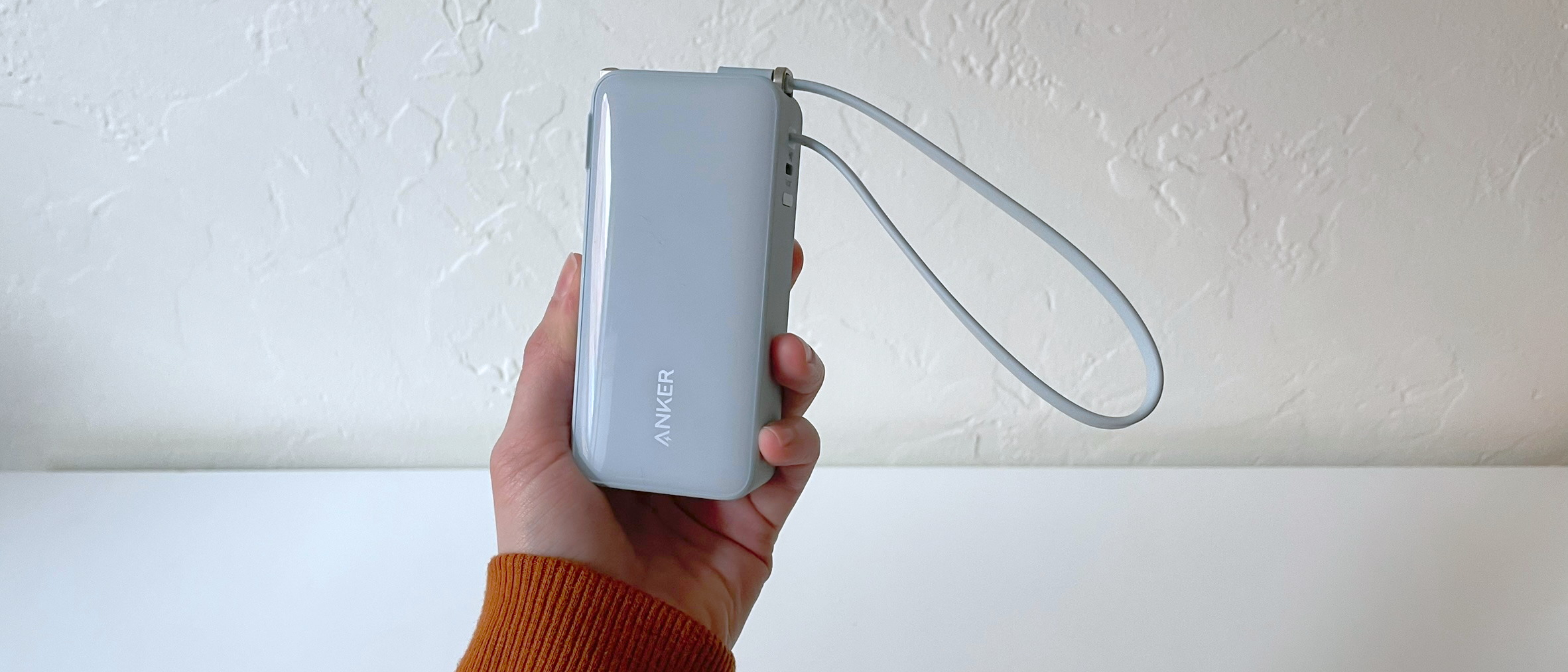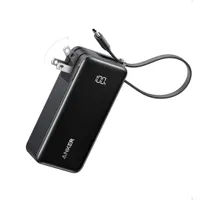Laptop Mag Verdict
The Anker A1637 is a portable charger that gets all the basics right in a highly versatile, pocket-sized design perfect for traveling or emergency charging. However, the lack of a USB Type-A port is a letdown.
Pros
- +
Small enough to fit in your pocket
- +
Supports fast charging
- +
Built-in USB Type-C cable
- +
Built-in AC wall charger
Cons
- -
No USB Type-A port
- -
Only one in/out port
- -
Drains fast with larger devices
Why you can trust Laptop Mag
I was relieved to have the Anker A1637 portable charger on hand a couple of weeks ago, but not because I was stuck in an airport.
The power went out in my apartment for an entire day – before I’d had time to recharge my iPad. Luckily, I had the Anker A1637 on hand, and it reminded me why it’s such a good idea to have a portable charger around, even if you don’t travel much.
The Anker A1637 is a basic, pocket-sized portable charger ideal for keeping in your backpack, glove compartment, or desk drawer in case you need to recharge but can’t access a wall charger. Although its small size has downsides, the Anker A1637 can also be the perfect portable charger for certain situations.
Here’s a look at my experience testing out the Anker A1637 and a few things you should know before buying one.
Anker A1637 portable charger: Price and availability
The Anker A1637 costs $45 on Amazon and comes in five colors: black, blue, pink, violet, and white. Depending on the primary devices you need to charge, you can choose between USB Type-C and lightning cable versions. USB Type-C is the way to go unless you have an older iPhone. Our review unit is the blue USB Type-C version.
Anker A1637 portable charger: $45 $35 @ Amazon
This 3-in-1 pocket-sized portable charger from Anker features a built-in cable and a folding AC plug so you can use it as a portable power bank or a wall charger. The built-in display allows you to quickly see how much power you have left. Pick from four colors and two types of built-in cable, USB Type-C and lightning.
Anker A1637 portable charger: Design
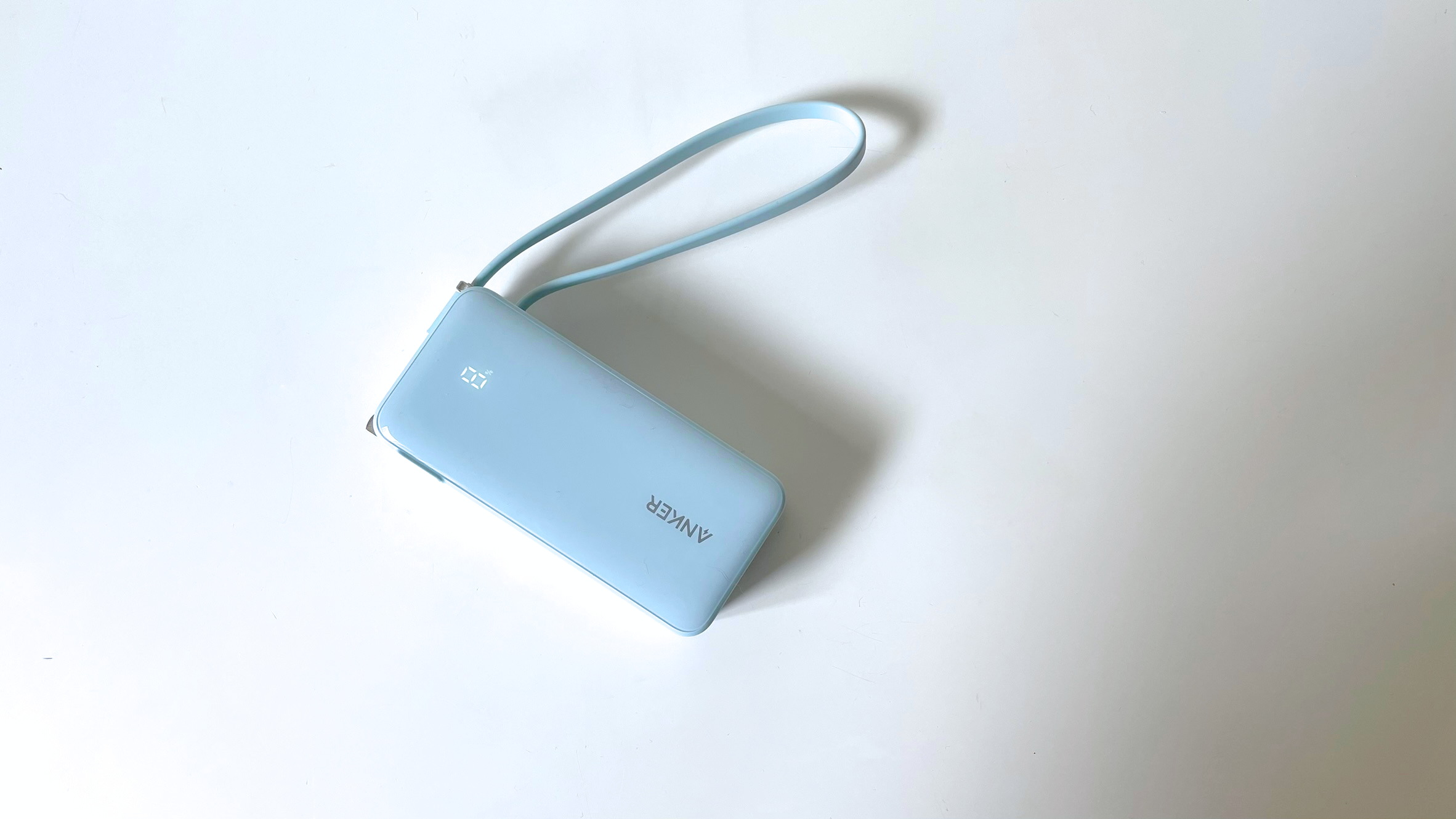
The Anker A1637 features a 10,000mAh battery, a small digital display, a foldable AC plug, a built-in cable, and one in/out port. It measures 4.25 x 2.01 x 1.22 inches and weighs 0.55 pounds, slightly more than my iPhone 12 Mini. So, it’s very compact. You can easily fit this charger in a jacket pocket (or even a larger pants pocket).
One feature missing from the Anker A1637 is a USB Type-A port. While few devices use USB Type-A for charging, many charging cables connect to USB Type-A for plugging into outlets and adapters. For instance, my iPhone 12 Mini charging cable is lightning to USB Type-A, so I wasn’t able to use it to charge my phone with the Anker A1637. Considering how common USB Type-A charging remains, I would have liked to see a Type-A port on this charger.
Sign up to receive The Snapshot, a free special dispatch from Laptop Mag, in your inbox.
Considering how common USB Type-A charging remains, I would have liked to see a Type-A port on this charger.
If your devices all use USB Type-C, you can use the built-in cable. However, to charge other devices, you will need charging cables with USB Type-C at one end.
The built-in display is basic but does the job. It’s disguised in the smooth side of the charger, so you won’t notice it until you plug it in. The display shows the charger’s current battery percentage (not the battery percentage of the device you’re charging). A small green lightning bolt icon will illuminate when the power bank is recharging. The hidden display gives the Anker A1637 a clean, minimalistic look.
I also liked the built-in AC plug. This allows you to use the Anker A1637 as a wall charger and makes it easy to recharge the power bank itself. The AC prongs fold so they won’t get in the way when using the A1637 as a portable charger.
Anker A1637 portable charger: Ports
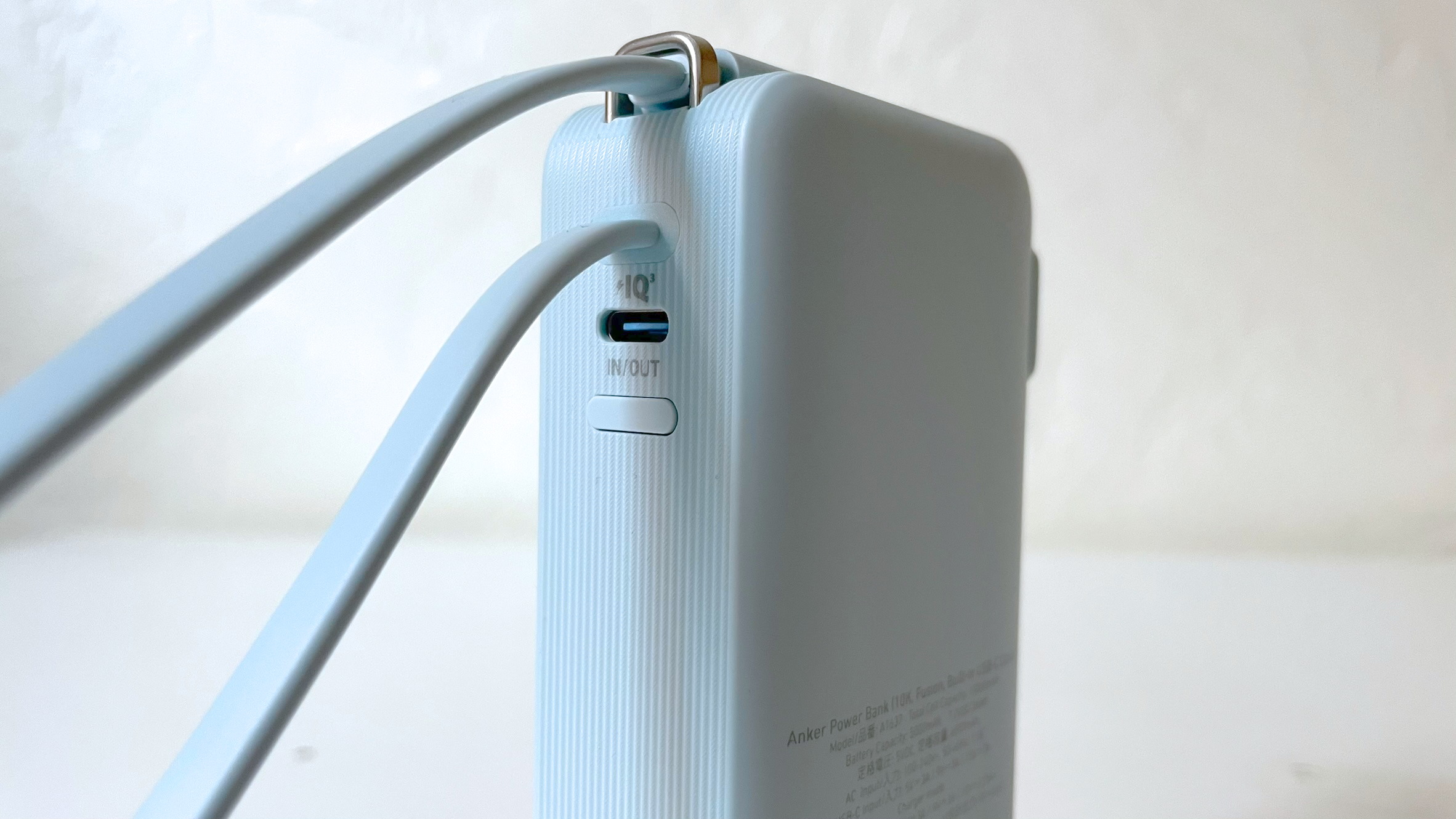
The Anker A1637 is only designed to charge one device at a time (or two small devices), so it’s pretty sparse on ports. It has one built-in cable, either USB Type-C or lightning. On the back, there’s one USB Type-C port for two-way charging.
Anker A1637 portable charger: Performance
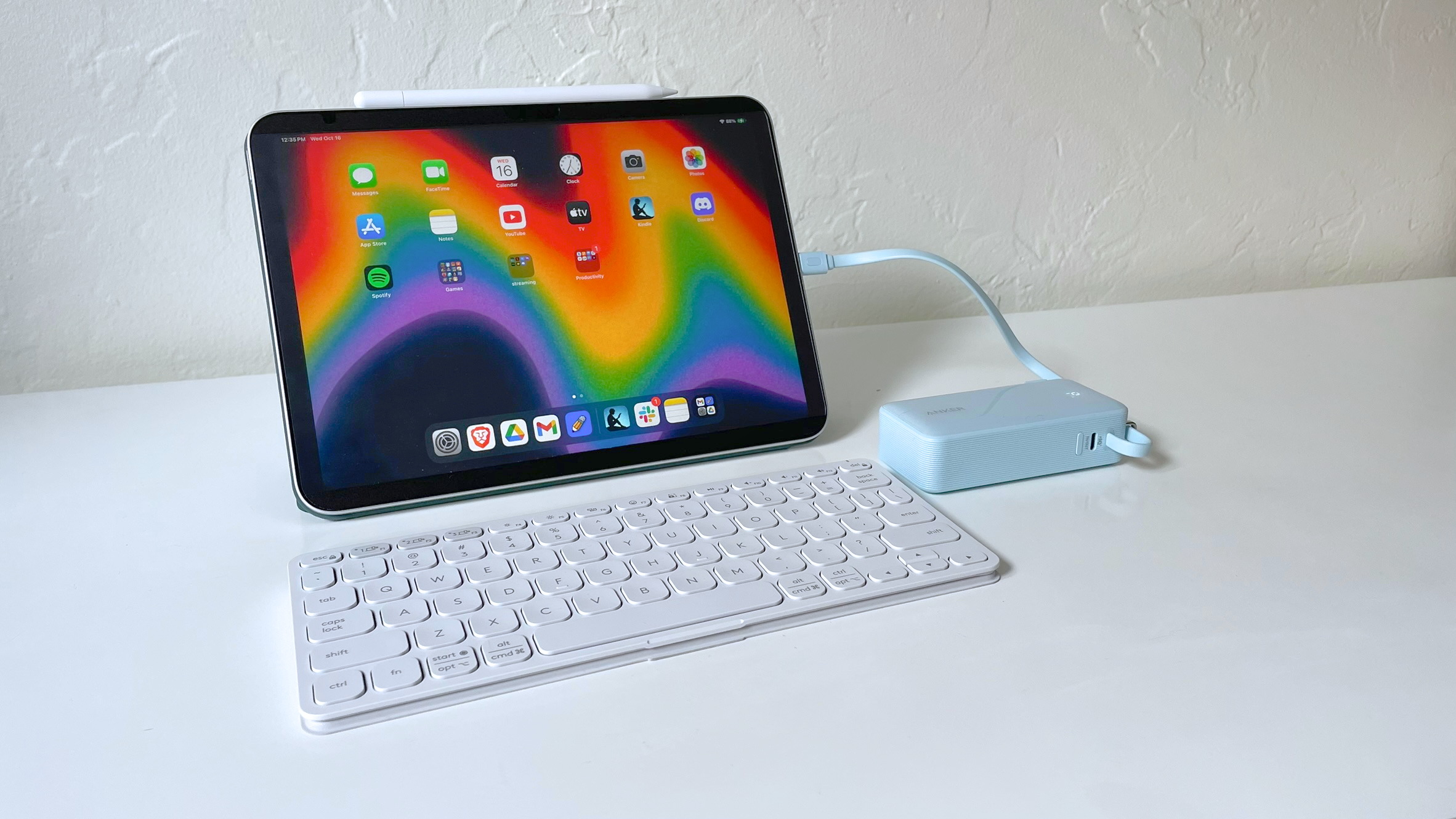
The Anker A1637 is a pocket-sized portable charger, but its small size means it can only provide so much juice. The 10,000mAh battery can recharge an iPhone 15 Pro almost two full times from 0 to 100 percent (the iPhone 15 Pro has a 3274mAh battery, to put that into perspective).
Larger devices will drain this power bank much faster, though. For instance, my iPad drained a full 20 percent of the Anker A1637’s battery just to refuel about 10 percent. The Anker A1637 can recharge a laptop, but not for a full charge. However, you can use the A1637 as a 30W wall charger, allowing some flexibility for larger devices like laptops and tablets.
The 30W fast charging support is incredibly convenient, and even without fast charging, the A1637 seemed to refuel my devices at least as quickly as my wall chargers. The digital display updates in real-time, too, and doesn’t fall asleep, so you can glance at the charger at any time to quickly check its battery level.
Bottom line
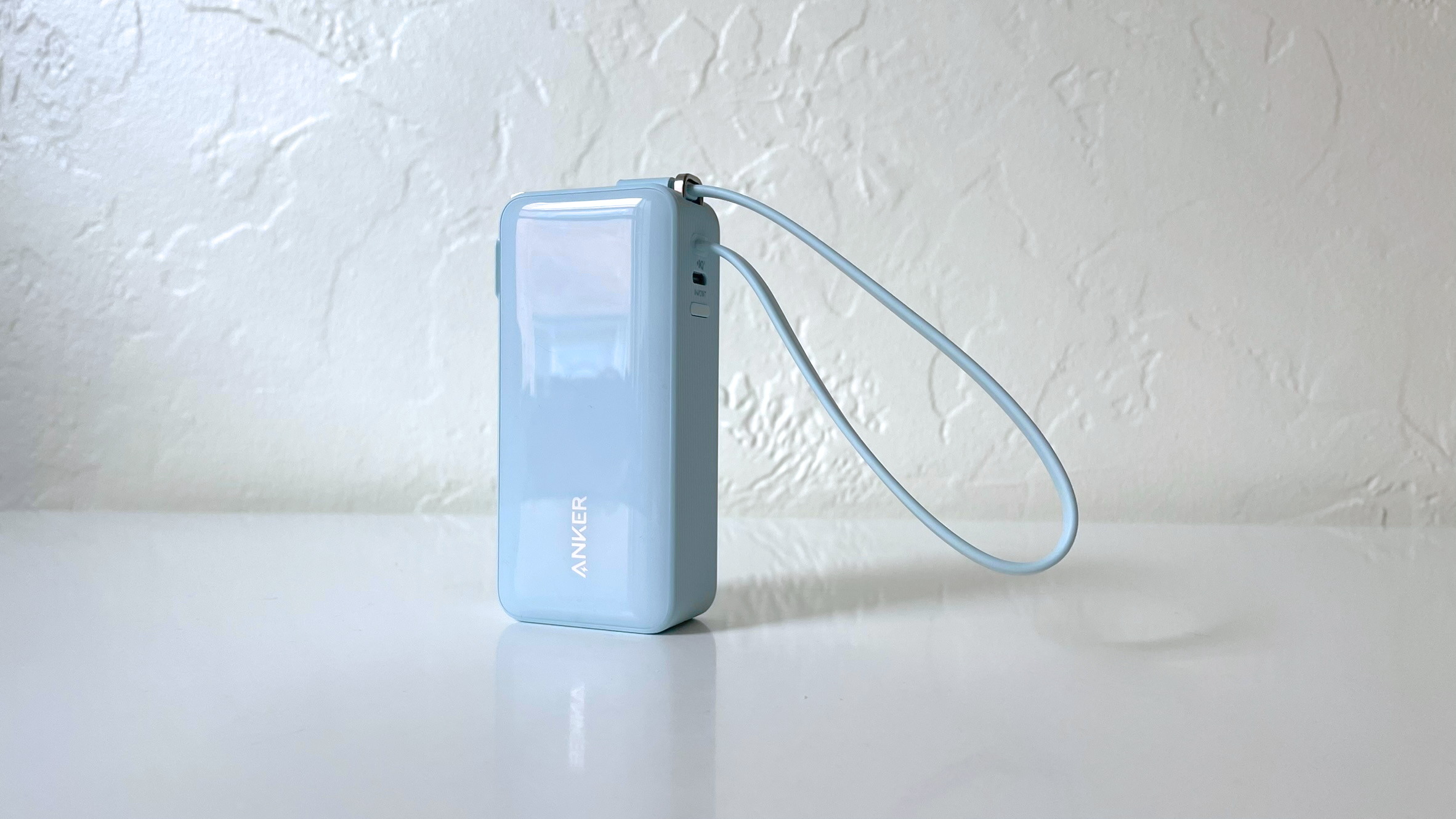
The Anker A1637 is the kind of handy, pocket-sized portable charger everyone should have for those unexpected moments when they need to recharge but don’t have access to a regular charger. It’s basic but reliable and multi-functional.
I found the Anker A1637 best for quick mobile charging. This isn’t a long-haul power bank that can provide five or more full recharges. It’s best for those moments when you realize you forgot your wall charger or forgot to recharge your device and need something to tide you over.
It’s also great for short weekend or day trips since it doesn’t take up much space in your bag (or pocket). It’s also small enough you can store one in your car for situations where you might get stranded on the road with nowhere to charge your phone. So, while the small battery capacity means you’ll need to recharge the A1637 often, it also allows this power bank to be small enough to have some serious versatility.
If you need a power bank for long trips or larger devices, consider the CUKTECH 20, which has a larger battery.

Stevie Bonifield is a freelance tech journalist who has written for PC Gamer, Tom's Guide, and Laptop Mag on everything from gaming to smartwatches. Outside of writing, Stevie loves indie games, TTRPGs, and building way too many custom keyboards.
